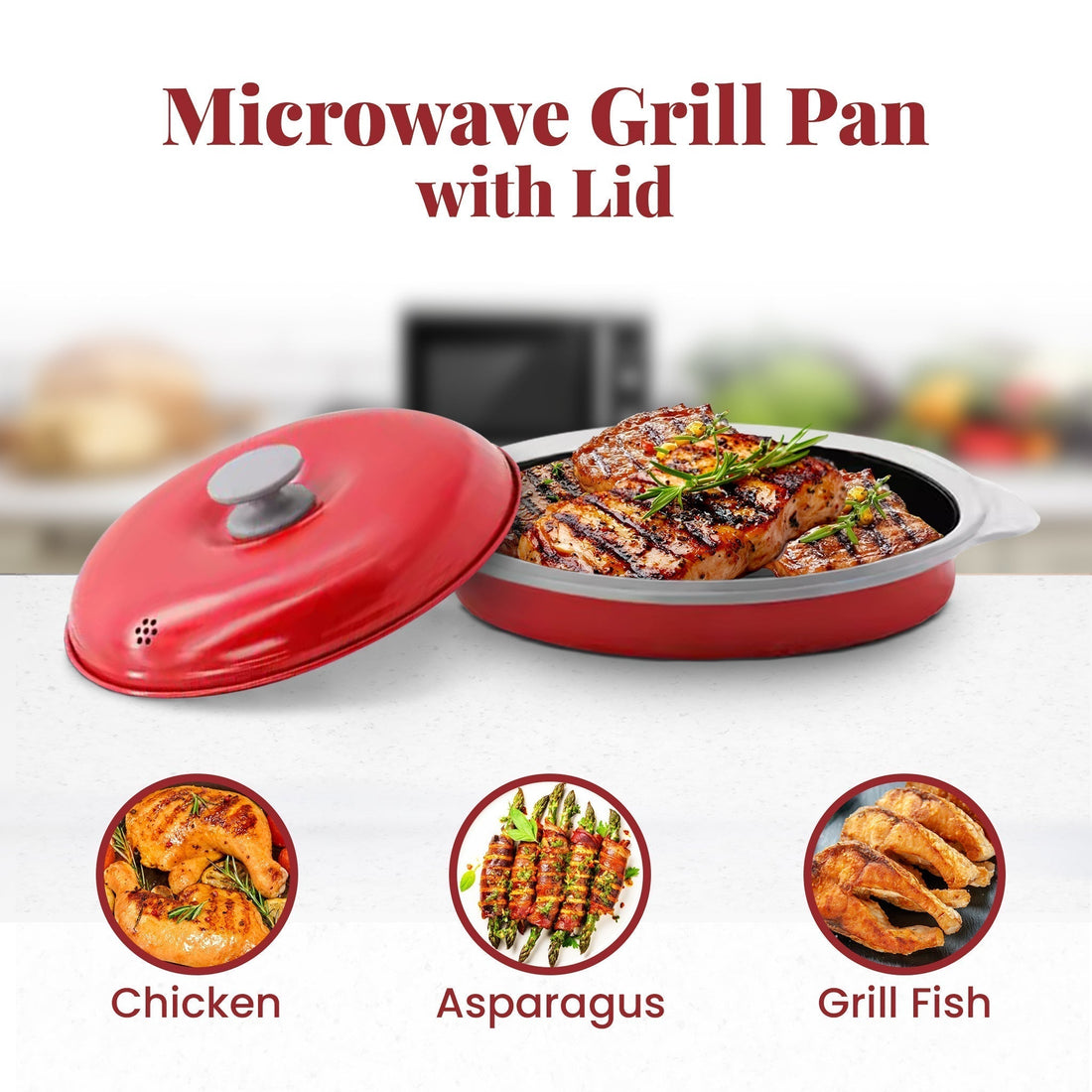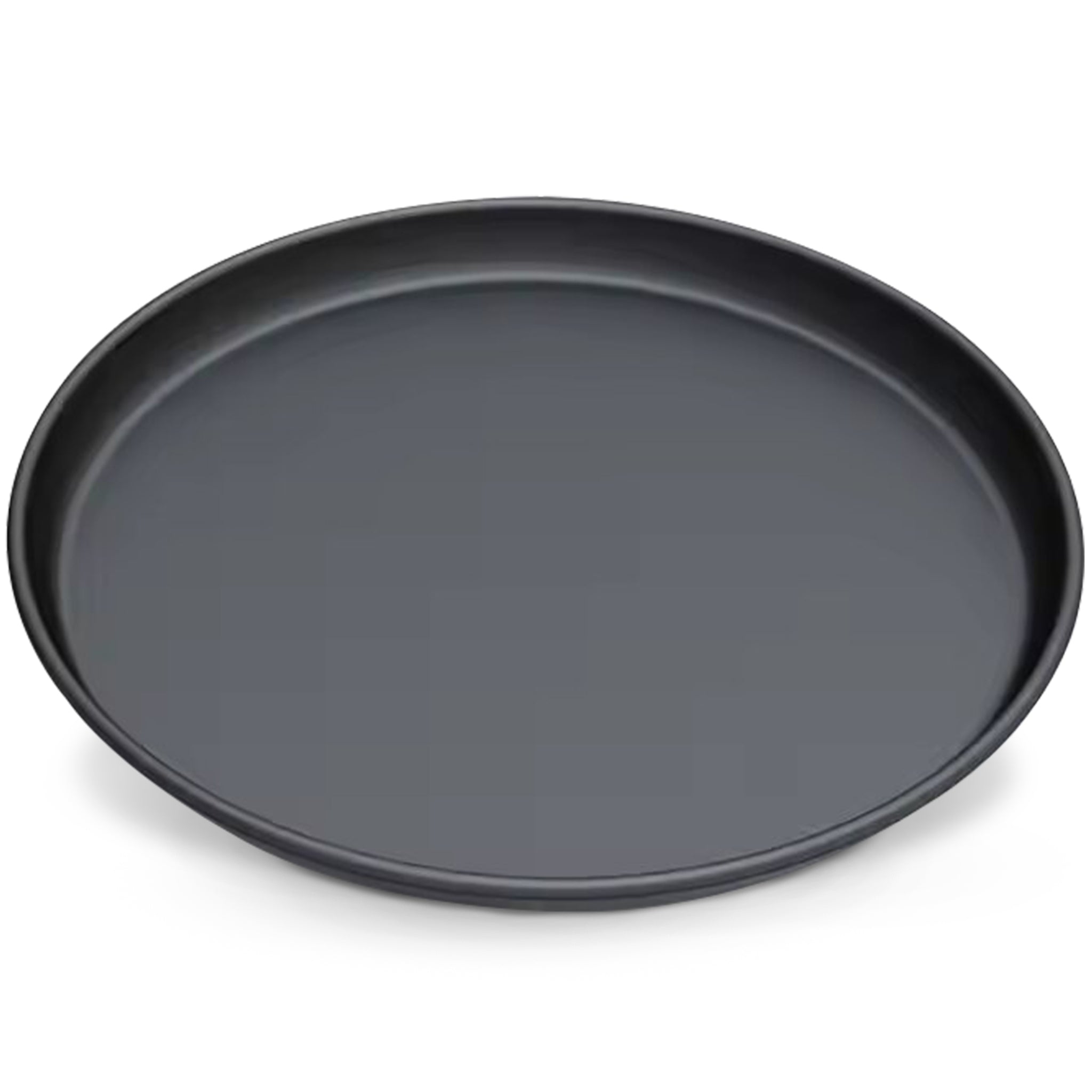
Achieving Crispy Perfection: The Art of Microwaving Your Favorite Foods
Are you tired of soggy leftovers and disappointing microwave meals? Say goodbye to rubbery pizza and hello to crispy perfection! In this article, we will unlock the secret to achieving irresistible, restaurant-quality dishes using just your microwave.
Microwaving your favorite foods can be an art form, and with a few simple tips and tricks, you can transform ordinary dishes into extraordinary culinary delights. Whether you're reheating leftovers, cooking a quick meal, or enjoying a microwaveable snack, we've got you covered.
Discover the key techniques that will revolutionize your microwave cooking experience, from proper food placement to mastering the power levels. Say goodbye to unevenly heated meals and hello to heavenly textures that will leave your taste buds dancing.
This comprehensive guide will take you through the dos and don'ts of microwaving various types of food, ensuring that you always achieve the perfect balance of flavor and texture. Get ready to elevate your microwave game and impress your friends and family with the art of microwaving your favorite foods.

DoubleWave 10″ Universal Microwave Crisper Pan | Round, Coated & Non-Stick | Reheat Bacon, Eggs, Pizza, Fries, Steak & Eggs

Microwave Grill Pan with Lid | Microwave Griller, Griddle & Crisper Pan with Lid for Grilling, Browning, and Crisping Foods
1. The Misconceptions About Microwaving Food
Microwaves have long been associated with quick and convenient cooking, but they have also garnered a bad reputation for producing subpar results. Many people believe that microwaving food leads to soggy textures and uneven heating. However, with the right techniques, you can achieve crispy perfection every time.
Contrary to popular belief, microwaves do not actually cook food from the inside out. They work by emitting electromagnetic waves that excite the water molecules present in the food, generating heat and cooking the food. Understanding this process is crucial to mastering the art of microwaving.
2. Understanding How Microwaves Work
To fully appreciate the art of microwaving, it's important to understand the science behind it. Microwaves emit electromagnetic waves, which are absorbed by the water molecules in the food. As these molecules absorb the energy, they start vibrating rapidly, generating heat and cooking the food.
Unlike conventional ovens, which rely on hot air to cook food, microwaves heat the food directly. This direct heating process is what allows for quick and efficient cooking. However, it also presents challenges when it comes to achieving crispy textures.
3. The Benefits of Microwaving Food
Microwaving offers numerous benefits that make it a popular cooking method for many individuals. Firstly, microwaves are incredibly time-efficient. They can cook or reheat food in a fraction of the time it takes for conventional methods. This is especially useful for busy individuals or those who need a quick meal on the go.
Secondly, microwaving preserves the nutrients in food better than other cooking methods. Since microwaves cook food quickly, they minimize the loss of vitamins and minerals that can occur with prolonged cooking. This is especially important when reheating leftovers, as it helps retain the nutritional value of the food.
Lastly, microwaving is a more energy-efficient option compared to conventional cooking methods. Microwaves use less energy overall, making them a greener choice for those looking to reduce their carbon footprint.
Tips for Achieving Crispy Perfection in the Microwave
Achieving crispy textures in the microwave may seem like a challenge, but with the right techniques, it's entirely possible. Here are some tips to help you achieve crispy perfection every time:
- Proper Food Placement: Placing your food on a microwave-safe plate or dish helps ensure even heating. Avoid overcrowding the plate, as this can lead to uneven cooking. Instead, arrange the food in a single layer, allowing the microwaves to reach all parts of the dish.
- Mastering Power Levels: Most microwaves offer different power settings, allowing you to adjust the intensity of the heat. For crispier results, opt for a higher power level. However, be mindful of the cooking time, as higher power levels can cook food faster.
- Utilize Microwave Safe Accessories: Microwave-safe accessories such as crisper trays, grill pans, and silicone mats can help achieve crispier textures. These accessories help elevate the food, allowing hot air to circulate and promote browning.
By following these tips, you can take your microwave cooking to the next level and achieve crispy perfection in a fraction of the time. Whether it's reheating pizza or cooking a quick snack, these techniques will revolutionize your microwave experience.
How to Microwave Different Types of Foods - Vegetables, Meats, and Desserts
Microwaving vegetables, meats, and desserts require different approaches to achieve the best results. Here's a breakdown of how to microwave each type of food:
Vegetables:
Microwaving vegetables is a quick and convenient way to cook them while retaining their nutrients. To microwave vegetables:
- Wash and chop the vegetables into even-sized pieces.
- Place them in a microwave-safe container with a lid or cover with microwave-safe plastic wrap.
- Add a small amount of water to the container to create steam, which helps cook the vegetables evenly.
- Microwave on high for the recommended cooking time, stirring halfway through to ensure even cooking.
Microwaving vegetables allows for precise control over the cooking time, resulting in perfectly cooked and vibrant vegetables.
Meats:
Microwaving meats can be tricky, as it's challenging to achieve crispy textures. However, microwaving can be a great option for defrosting or precooking meats before finishing them off in another cooking method.
To microwave meats:
- Place the meat on a microwave-safe plate or dish.
- Cover it with a microwave-safe lid or wrap it with microwave-safe plastic wrap, leaving a small vent for steam to escape.
- Microwave on medium power, using shorter cooking intervals to prevent overcooking or drying out the meat.
- Check the internal temperature of the meat using a meat thermometer to ensure it reaches the desired level of doneness.
Microwaving meats allows for quick and efficient defrosting or precooking, but for crispy exteriors, it's best to finish them off on a stovetop or grill.
Desserts:
Microwaving desserts can be a game-changer for those with a sweet tooth. From mug cakes to warm brownies, the microwave can produce quick and delicious treats.
To microwave desserts:
- Prepare the dessert batter according to the recipe.
- Pour the batter into a microwave-safe mug or dish, leaving room for the dessert to rise.
- Microwave on high for the recommended cooking time, checking for doneness with a toothpick or skewer.
Microwaving desserts allows for fast and easy individual servings, perfect for satisfying late-night cravings or impressing guests with a quick dessert option.
Common Mistakes to Avoid When Microwaving
While microwaving is a versatile cooking method, there are some common mistakes to avoid to ensure the best results. Here are a few pitfalls to watch out for:
- Uneven Food Placement: Avoid overcrowding the microwave or placing food in piles, as this can lead to uneven cooking. Arrange the food in a single layer to ensure even heating.
- Incorrect Power Levels: Using the wrong power level can result in undercooked or overcooked food. Be sure to adjust the power level according to the recommended guidelines for each dish.
- Improper Covering: When microwaving, it's essential to cover the food properly to trap steam and prevent drying out. Use microwave-safe lids or plastic wrap with vents to allow steam to escape.
- Neglecting Stirring: Stirring food halfway through the cooking process helps distribute heat evenly and prevents hot spots. Be sure to stir or rotate the dish to promote even cooking.
By avoiding these common mistakes, you can elevate your microwave cooking and achieve better results every time.
Exploring Microwave-Safe Cookware and Accessories:
To maximize your microwave cooking experience, it's essential to invest in microwave-safe cookware and accessories. Here are some options to consider:
- Microwave-Safe Glass: Glass containers are excellent for microwaving as they distribute heat evenly and are resistant to staining and odor retention.
- Ceramic and Stoneware: These materials are also microwave-safe and offer excellent heat distribution. However, be mindful of the manufacturer's instructions as some ceramics may not be suitable for high-temperature microwaving.
- Silicone Mats and Crisper Trays: These accessories help elevate food and promote browning and crispiness. They are especially useful for reheating pizza, fries, or other foods that benefit from a crispy texture.
- Microwave-Safe Plastic Wrap and Covers: These are essential for covering dishes to trap steam and prevent drying out. Look for microwave-safe options specifically designed for use in microwaves.
Investing in the right cookware and accessories can enhance your microwave cooking experience and open up a world of culinary possibilities.
Recipes and Ideas for Microwaving Your Favorite Foods:
Now that you have a good understanding of the art of microwaving, let's explore some delicious recipes and ideas to inspire your microwave cooking adventures:
- Cheesy Broccoli Casserole: Steam fresh broccoli in the microwave and top it with a generous amount of melted cheese for a quick and comforting side dish.
- Microwave Nachos: Layer tortilla chips with shredded cheese, beans, and your favorite toppings, then microwave until the cheese is melted and bubbly for a quick and easy snack or party appetizer.
- Mug Omelet: Beat eggs with your choice of fillings, such as cheese, ham, and vegetables, then microwave in a mug for a quick and customizable breakfast on the go.
- Microwaved Apple Crisp: Combine sliced apples, cinnamon, and a crumble topping, then microwave until the apples are tender and the topping is golden and crisp for a warm and comforting dessert.
These recipes are just a starting point for your microwave cooking adventures. Feel free to experiment with your favorite ingredients and flavors to create unique and delicious dishes.
The Future of Microwave Technology and Its Impact on Cooking
Microwave technology continues to evolve, and the future holds exciting possibilities for culinary enthusiasts. Researchers are exploring advancements such as smart microwaves that can automatically adjust cooking times and power levels based on the food being cooked.
Additionally, there is growing interest in microwave-assisted cooking, where microwaves are used in combination with other cooking methods to achieve optimal results. This hybrid approach allows for the benefits of microwaving, such as speed and efficiency, while still achieving desired textures and flavors.
As microwave technology continues to advance, it's evident that microwaving will play a significant role in the future of cooking. Embracing the versatility of the microwave opens up a world of culinary possibilities and allows for quick and delicious meals that fit seamlessly into our busy lives.
Conclusion: Embracing the Versatility of the Microwave
In conclusion, microwaving your favorite foods is an art form that can lead to crispy perfection. By understanding how microwaves work, utilizing proper techniques, and investing in the right cookware and accessories, you can achieve restaurant-quality results right in your own kitchen.
Say goodbye to soggy leftovers and hello to irresistible textures that will leave your taste buds dancing. The microwave is a powerful tool that, when used correctly, can elevate your cooking game and impress your friends and family with your culinary skills.
So, go ahead and embrace the versatility of the microwave. Explore new recipes, experiment with flavors, and enjoy the convenience and efficiency that microwaving brings to your kitchen. Crispy perfection awaits!
Unlocking the Potential of Your Microwave
Achieving crispy perfection often comes down to the tools you use. High-quality microwave utensils are designed to enhance results, ensuring even heating and optimal texture. From crisper pans to microwave-safe trays, investing in the right cookware can transform your microwave meals into culinary delights.








